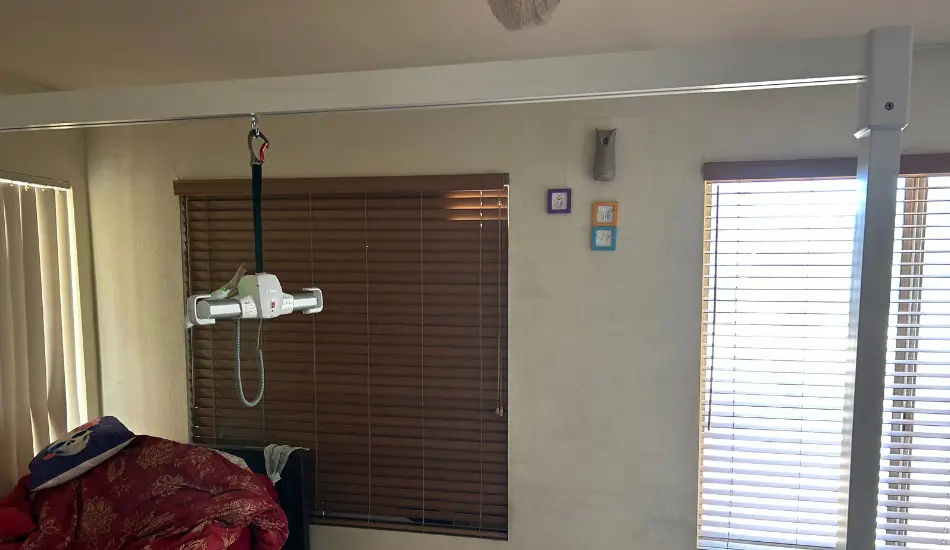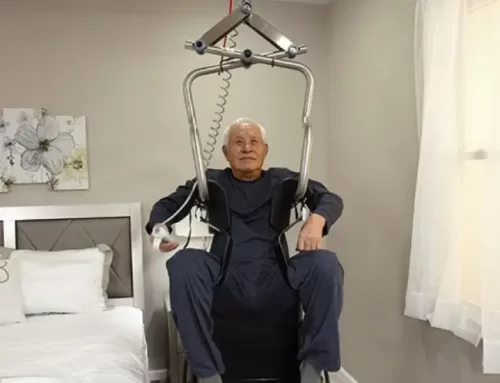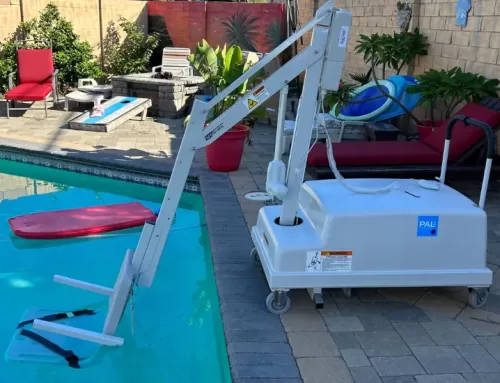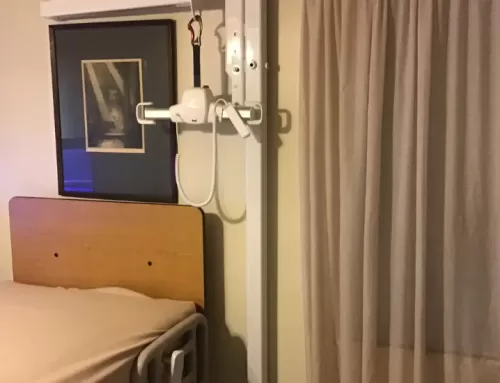Imagine being physically limited and finding it difficult to walk around every day. Patient lifts are a great solution, particularly the ones mounted on the ceiling. Now the question is, “What is ceiling lift?” Ceiling lifts are fantastic for people with limited strength or limitations. They lessen the possibility of accidents like falls by assisting with transfers quickly and safely. This article functions as a sort of beginner’s manual for ceiling lifts. We will discuss their configuration, features, and how to keep everyone safe when using them.
What Is a Ceiling Lift?
Ceiling lift systems are an integral aspect of the care environment in all care settings. They assist caregivers in lifting and moving persons with limited mobility. A ceiling lift is an automatic device that moves a person along an overhead track. The track can be ceiling-mounted or moveable. The device includes a sling for the individual being moved.
Types of Ceiling Lifts
It is important to understand a patient’s needs before acquiring one. While all ceiling lifts perform similar functions, there are three types:
-
Portable Ceiling Lifts
Portable ceiling lifts still use fixed tracks, but the caregiver can unhook them and move them from one room to another. These ceiling lifts can also have freestanding systems that extend from one corner to the next. They are not fastened to the ceiling. Rather, they are supported by three or four posts on the floor.
-
Fixed Ceiling Lifts
Fixed ceiling lifts function on an installed ceiling track. The track is firmly attached to the ceiling to meet the lift’s load requirements safely. If the installation is in a home, the track may run from the bedroom to the bathroom, allowing a person to walk safely between two sites.
-
Bariatric Ceiling Lifts
The bariatric ceiling lifter is the recommended piece of equipment for bed repositioning. Bedside transfers provide many benefits to both the patient and the caregiver. A popular transfer motion is to go from the bed to a chair or commode beside it. In certain cases, two persons may need to operate together. The ceiling lift could be difficult to conceal. But, the device is simple to operate and requires minimal floor space.
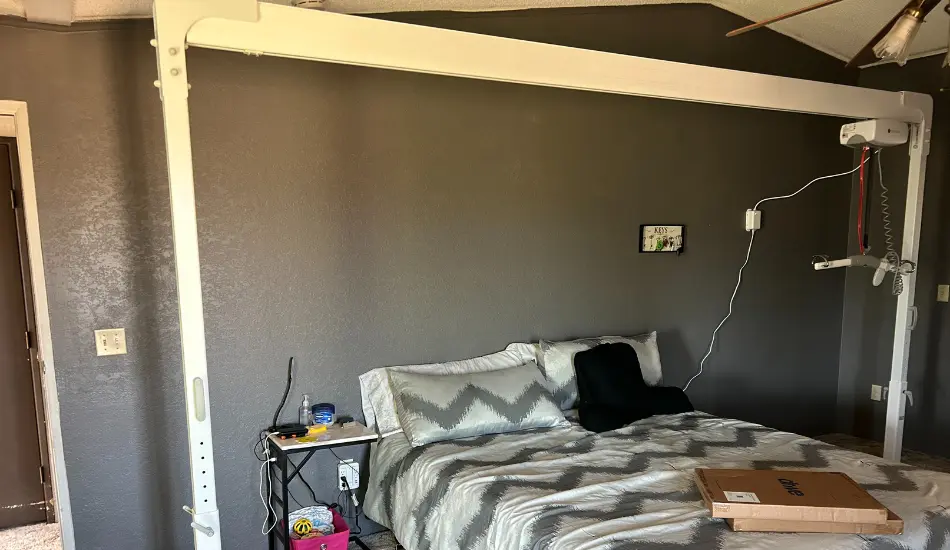
Who Needs a Ceiling Lift?
Ceiling lifts offer several advantages over typical, wheel-based elevators. Their ceiling-mounted design makes it easier to navigate cluttered rooms or tiny doors. There are many motoring options that reduce the amount of physical exertion. It is required by patients and caregivers during transfers. It’s worth noting that ceiling lifts provide some level of protection for both patients and caregivers. Ceiling lifts move patients with greater support and ease. It lowers the danger of caregivers damaging their backs, shoulders, or arms while delivering care.
Benefits for Improved Mobility and Caregiving
29% of the US population looks after a chronically ill or elderly relative or friend. Using a ceiling lift device provides many benefits for those with limited mobility and their caregivers. Here are some discussed-
-
Improved Safety and Reduced Injury Risk During Transfers
The primary benefit of a ceiling track hoist is its excellent level of convenience. Ceiling track hoists are fast, simple, and easy to use. They never get in the way, lowering the risk of trips and falls in a home or care environment.
Also, because they are always available, caregivers can readily access and use them anytime. When coping with mobility issues, ceiling hoists can rapidly become a staple of a person’s daily routine.
-
Enhancing Independence and Comfort for Individuals with Mobility Issues
Home modifications frequently make it easier to complete daily tasks around the house, especially for persons with mobility issues. This improves the functionality and independence of the living environment. As a result, someone with mobility issues can easily perform their own household tasks, such as fixing a plate without worry, bathing and clothing themselves, and moving around freely.
-
Time and Effort Savings for Caregivers, Reducing Strain and Fatigue
Ceiling lifts reduce caregiver physical demands while streamlining the transfer process, making it easier and quicker than traditional lifting by-hand methods. This allows caregivers to focus their time and attention on more vital caregiving tasks. By automating the lifting process, caregivers can save both energy and time, allowing them to focus on providing crucial care and assistance.
-
Addressing Specific Needs and Accommodating Various Settings
Ceiling lifts offer versatility and adaptability to satisfy unique requirements in a range of settings. Ceiling lift systems can be customized to match specific settings and requirements, whether in the home or in a healthcare facility. They can be placed in bathrooms, living rooms, and other spaces to ensure seamless and safe transfers as required.
Choosing the Right Ceiling Lift
If you are thinking about buying a ceiling hoist for your home or another location, there are a few things to consider before making a selection.
-
Identifying the Individual’s Needs
Begin by assessing your strength and ability to stand on your own. If you can stand on your own, a standing hoist may be the best choice for you. If you require complete hoisting, determine whether you require spine assistance or can move your neck and head by yourself.
Your caretaker might be having difficulty caring for you. A ceiling hoist requires less effort to raise or move the user and can be customized to fit your home.
-
Considering Additional Features
Ensure the ceiling lift you purchase has a weight capacity that is adequate for the individual who will use it. Consider both the individual’s weight and the extra mass from clothes, pillows, or other items carried in the lifting sling.
Measure the ceiling height in the area where the lift will be installed. That’s because you need to ensure it is sufficient for the lift to function correctly. You should also evaluate the ceiling’s design and if it is strong enough to hold the weight of both the lift and the person being raised. Consider where the lift’s power source will be placed and how simple it will be to access. If you plan to use the elevator at home, you may need to build an electrical outlet near the ceiling.
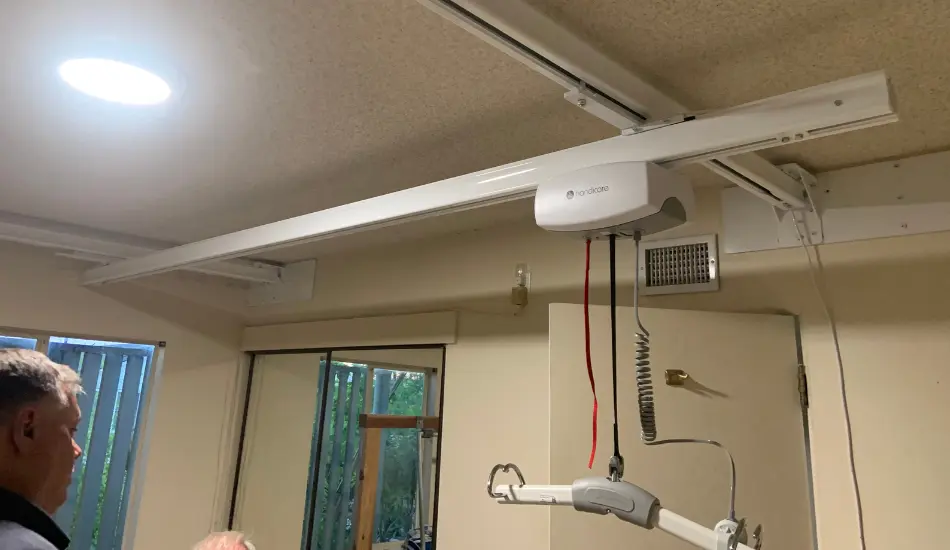
Maintenance Tips for Ensuring Long-Term Performance
Proper maintenance is required to keep a ceiling lift functioning at top performance. Owners should always refer to the instruction manual for precise instructions, although the following are general principles for ceiling lift maintenance:
-
Daily Checklist
Check the battery. When away from use, the battery should remain fully charged and ready to use when needed. If a visual check reveals any signs of damage, do not use the battery. Replace any damaged batteries immediately. Inspect the lifting mechanism. If anything is missing or broken, do not use the lift. Inspect the straps and sling. Do not use the lift if the cloth is worn, has noticeable tears, or shows symptoms of loose stitching.
-
Cleaning
The lift’s body can be wiped down daily or as needed using a gentle, lint-free, wet cloth. If required, a mild detergent can be used, but solvents or aggressive cleaners should never be used because they may damage the finish. The inside of the track can also be wiped off regularly to prevent dirt, grit, and grime from accumulating and preventing the unit from running smoothly over the track.
-
Sling
Adequate care is essential to keeping your sling strong, intact, and clean. Keep it outside from direct sunlight in a cool, dry environment. Avoid corrosive chemicals and sharp objects, which might harm the fibers. Follow the washing directions carefully, and do not use if there is evidence of abrasion, broken stitching, holes, or other wear.
In the End
A ceiling lift is more than simply a piece of machinery—it’s a lifesaver for freedom and safety. We have revealed a solution that transforms mobility support by explaining the common query, “What is a ceiling lift?” Call Before You Fall firmly believes in giving people the means to live a safer, more independent life. These lifts represent empowerment, dignity, and peace of mind. They go beyond simple utility.
For this reason, a ceiling lift is more than just a tool—it’s a game-changer. Whether you’re recovering from an injury, managing a disability, or helping a loved one, Call Before You Fall provides the freedom to move confidently and securely.

